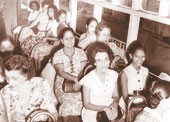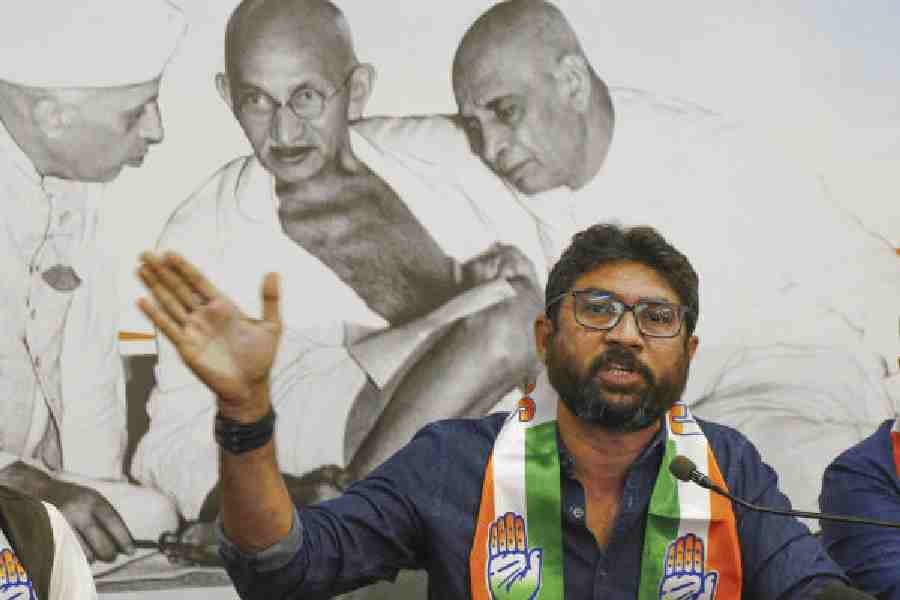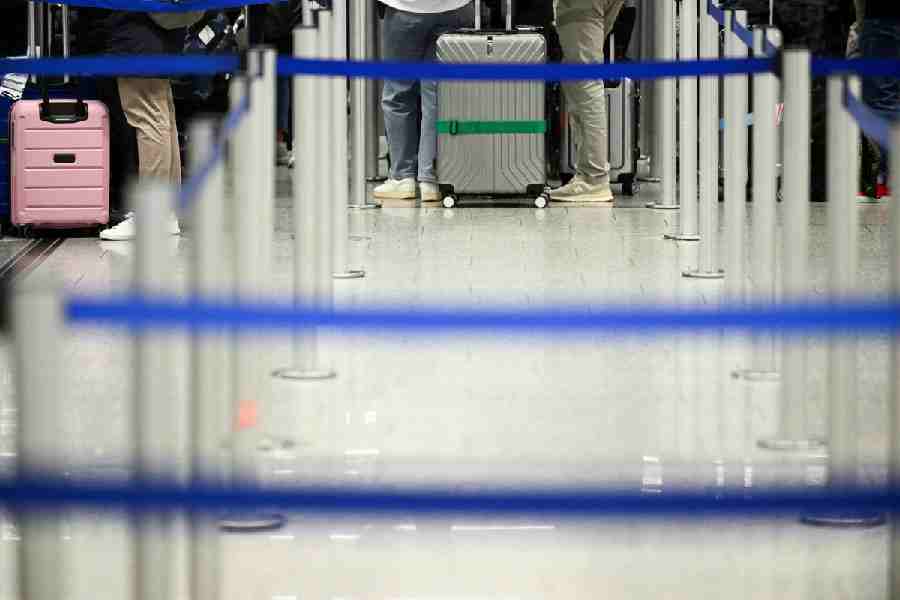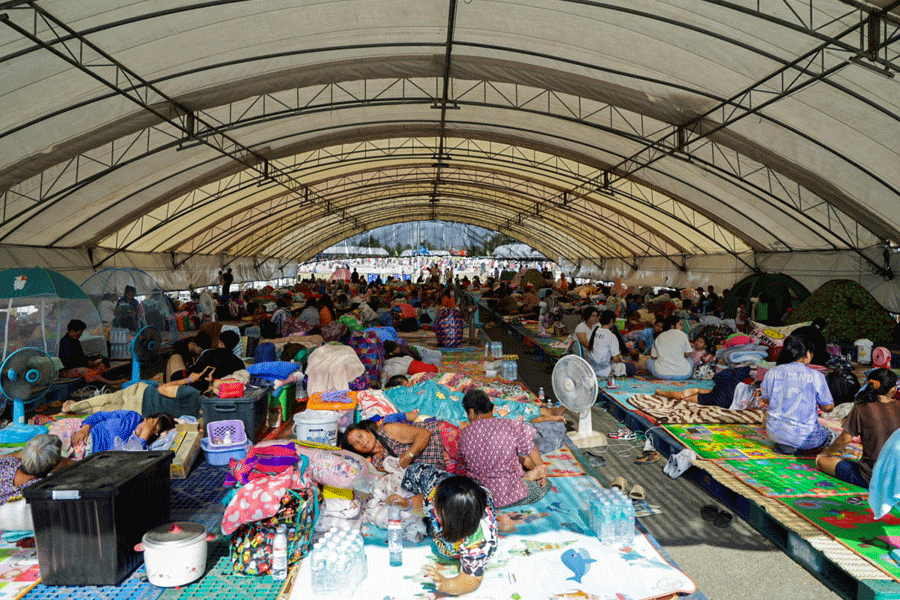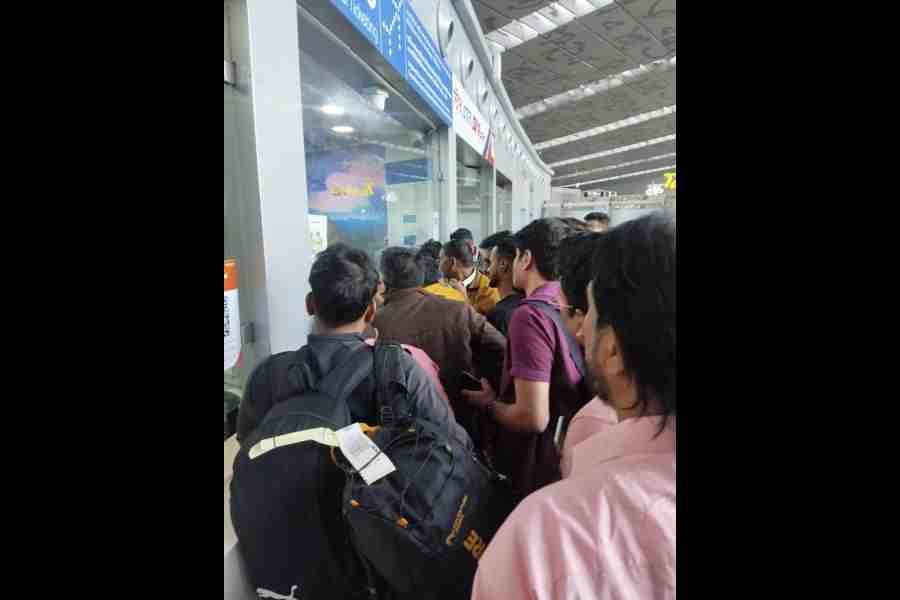 |
| A ladies’ special tram in the Fifties and (below) the ladies’ special train between Howrah station and Bandel introduced last week. Picture by Gopal Senapati |
 |
The difference in mood between a general and a ladies’ train is proof again that if men are from Mars, women are from Venus. The stable, stationary world may be peopled with men who giggle and gossip, but being the “daily passenger” is serious business. They enter with a purposeful look, seek a seat, push and shove and if a woman unaccompanied by a male companion is around, stare unapologetically at her till they are bored, then perhaps fall asleep. Conversation is limited, matter-of-fact. A few vendors try to grab the attention. “Pop” goes the soda water bottle.
Women commuters have more fun. In a compartment in the ladies’ special, the conversation varies from work to travel to shopping. There are teachers, government servants, students. Business is brisk. Women vendors enter with homemade potato chips and munchies. Trays of bangles, earrings and accessories are passed along.
A newly married woman is reassured by her husband as he sees her off at Mankundu: “There are only women on this train.” A middle-aged woman steadies a young girl, as she stumbles when the train lurches away from the station.
Some men like it too. “Even if it takes 20 per cent of the load off the general trains it would mean more space for us,” said S.K. Shihi, a regular on the Bandel local. But not everyone is happy — and that includes women. Many feel that instead of one ladies’ special, there should be more ladies’ compartments in all trains.
“Not everyone can take this train. In the evening most government offices give over at 5.30-6. You can’t wait till 7pm to catch the ladies’ special back,” says Arpita Barat, who holds a government job, as she settles down with the newspaper in the morning train. The evening train starts from Howrah at 6.55pm.
Most wish for more ladies’ compartments. “There are obvious problems in travelling in a general compartment. It would be really nice if instead of one, the authorities could have two adjacent ladies compartments in every local train,” says Abanti Mitra, an engineer. Women feel it is always better to have two ladies’ compartments adjacent to each other. “If they are too far away, one has to run from one to the other, if one compartment is packed,” says Mitra.
Since the ladies special has been introduced, she has pushed back her schedule to take this train, but complains that she reaches office late. The ladies special reaches Howrah a little before 10am.
“Sometimes the one ladies’ compartment in these trains gets so crowded that I am forced to board the general compartment,” says Sarmila De, a teacher.
Some wonder whether the train will get enough passengers, once the newness wanes. “More coaches in general trains would have been good,” says a woman.
In October 1957, special ladies’ trams were introduced in the city. Now there are seats reserved for women on buses. The Metro did away with the ladies’ seats and introduced two compartments for women in 2008. But these measures have not worked always.
The ladies’ compartments in the Metro lasted only a week. “There were two ladies’ compartments, one in the front and one in the back. It led to a lot of rush and confusion,” says a Metro Railways official. In the buses, men often hover over the ladies’ seats, causing inconvenience.
Perhaps Calcutta could follow the example of Mumbai local trains. There are four ladies’ compartments — two large and one small second class ones and a first class one — in each 12-coach Mumbai local and ladies’ special trains on every route. “Ladies” in a Mumbai train is a world of its own. The ongoing serial Ladies Special, featuring Neena Gupta, is proof of that. In Calcutta, even 12-coach trains have one ladies’ compartment.

